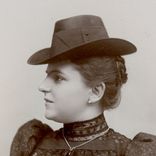Speaking Up: Hungarian Peasant Women’s Activism
In the 1890s, Hungary was part of the Austro-Hungarian Empire, and the majority of its population lived in rural areas and worked in agriculture. Land distribution was highly unequal, as large landowners controlled most of the farmland, while the majority of the peasants either owned tiny plots or were completely landless. Many poor peasants worked as servants on larger estates, in the employ of wealthier peasants or big landowners, or as migrant and day labourers, often under harsh conditions. Women played a crucial role in agricultural work but were dependent on male household members or received smaller payments than men both in kind and in cash.
The southeastern region of Hungary, known as Viharsarok (Stormy Corner), became a hotspot for peasant labour agitation. This area saw frequent strikes and protests by agrarian workers, making it one of the first centres of socialist organizing among peasants. While men were the primary leaders of these movements, peasant women also participated actively despite being largely ignored in historical accounts.
Together with their male comrades, peasant women fought for a variety of improvements in the working and living conditions of agrarian men and women. One of peasant women’s primary demands was better wages: for men workers, for women workers, or for both. They also sought an end to exploitative contracts that landowners used to trap them and their families in poverty. Many women protested together with men against the mistreatment they faced, as landowners and their overseers cheated them out of food and wages. Beyond these economic concerns, peasant women highlighted the unique struggles they faced as both wage workers and caregivers. Wage labour in the fields and other types of paid work were an additional burden besides their childcare and household management responsibilities. By organizing alongside men and in separate women’s groups, peasant women aimed to gain recognition for this double workload and push for better conditions that would support both their families and their own well-being.

Arrival of seasonal workers at the Mezőhegyes railway station, 1890s (Photographer: Ellinger Ede, source: Hungarian Agricultural Museum and Library, EF_2013_6_1_r)
Their activist methods in agrarian socialist organizations among others included organizing strikes, participating in demonstrations, contributing to and distributing socialist press, and attending socialist conferences. Women also carried out essential daily tasks that supported the movement such as cleaning meeting spaces and sewing banners. Often overlooked, these contributions nevertheless helped build solidarity within the movement.
One of the most dramatic moments of such peasant activism happened in the town of Battonya on 21 June 1891. A large group of peasants, including many women, gathered to demand better wages and an end to compulsory unpaid labour (corvée). One of the women, Vera Károly, was identified as a leader. In another peasant protest in April 1892, a group of women stormed the town hall in Hódmezővásárhely, occupying the courtyard for four hours before soldiers arrived to remove them. Reports describe them throwing stones and bricks at officials while demanding fair treatment. In the end, the authorities cracked down hard, sentencing ten women to prison alongside their male comrades.
There were not many among contemporary middle-class women activists who tried to attract attention to the plight of peasant women. Mariska Várkonyi was a key figure in the Hungarian agrarian socialist movement at the end of the nineteenth century and beginning of the twentieth. Her publications in one of the leading opposition dailies focused on topics related to the discrimination against women and peasants. As the editor of Agrarian Worker (Földmívelő), the first newspaper dedicated solely to agrarian workers, she encouraged women to organize within the independent social democratic movement (later the Independent Socialist Party). Through her writings and activism, she highlighted the exploitation of female agricultural workers, the inequality in wages, and the burden of balancing field labour with domestic responsibilities. Várkonyi played a crucial role in shaping a gender-conscious movement, ensuring that peasant women’s struggles were acknowledged within the broader agrarian socialist cause.
Despite their active role, peasant women’s activism was mostly ignored or distorted in historical records. Official reports written by the authorities focused almost entirely on male leaders, while newspaper coverage portrayed women as emotional, irrational, and violent. Their participation in strikes and uprisings was often described in sensationalist terms, reinforcing gender stereotypes rather than engaging with their legitimate grievances. Yet peasant women in Viharsarok were neither silent nor irrational victims of oppression; they were agents of change, who demanded justice and better conditions for themselves and their families.
Read more here


